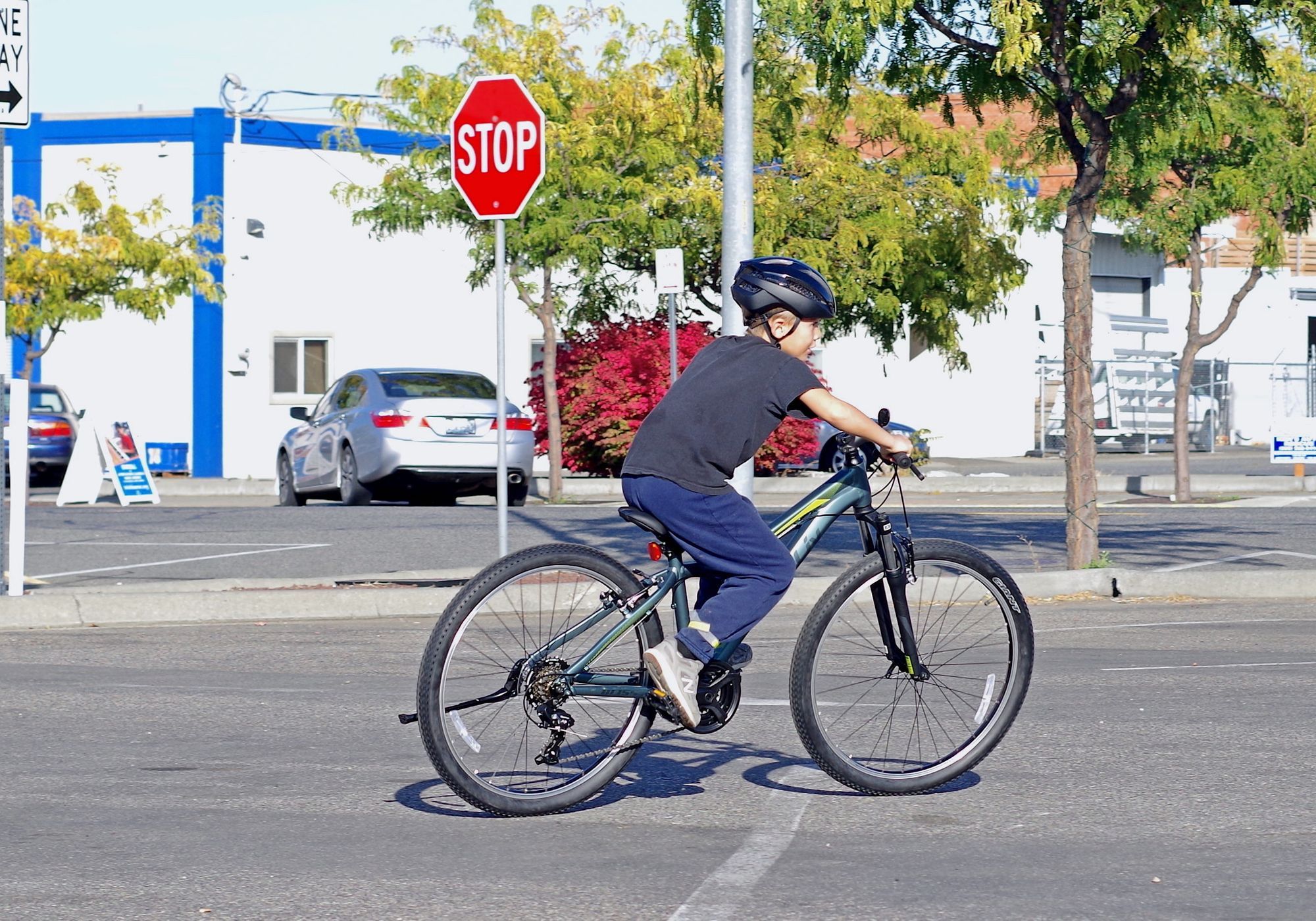This October, the new and improved RCW 46.61.190 turned one. Hooray! We thought we would celebrate by telling you what the new and improved RCW 46.61.190 actually is, so hold your horses. Actually, no. Don’t hold your horses. Just maybe… slow them down a little. Yield, if you will.
I present to you: The Safety Stop, also known as the Idaho Stop and the Delaware Yield. The Safety Stop is a new addition to Washington’s permanent laws, also called RCWs (Revised Codes of Washington), that allows cyclists to treat stop signs as yield signs, with some important exceptions. Maybe you already know about this since it’s been a law for over a year. If you’ve heard of it or not, we thought we would lay it out for you and provide a little background to boot.
As already mentioned above, the Safety Stop allows people who are on bikes to legally treat stop signs as yield signs. This means that IF you have already slowed your bike to a speed that would allow you to stop if needed AND no other traffic (human or vehicular) is present, THEN you can legally proceed through a stop sign without stopping. This applies only to human-powered and electric assist bicycles; it doesn’t apply to scooters. Sorry, scooters. The important thing to remember here is that cyclists must always obey traffic lights and must always stop at stop signs on school busses and railroad crossings.
Now that you know what the Safety Stop is, let's talk about what researchers have found in the states where it’s a law. Washington was the 5th state to adopt a version of the Safety Stop, following Idaho, Delaware, Arkansas, and Oregon. In Idaho, the state saw a 14% decrease in bicycling injuries in the year after the Idaho Stop was passed. Idaho cities were also found to be 30% safer for bicyclists when compared to similar cities without safety stop laws. In Delaware, crashes involving bikes fell by 20% in the 30 months after the Delaware Yield was passed. A 2010 study from UC Berkeley (Meggs, 2010) details why the Safety Stop works well for cyclists and general traffic flow:
“Intersections are the most dangerous zone for cyclists, whose safety benefits from the freedom to choose the safest time to clear, and to do so more quickly. Bicyclists enjoy vastly superior abilities to perceive and execute a safe yield at a stop than other modes, and great incentive to do so safely. Exposure to harmful pollutants which accrue at intersections is also reduced.”

If you enjoy riding your bike in the Tri-Cities, knowledge is not only power, but safety! There are some useful tools at your disposal that can make navigating streets and intersections easier for you. The handy dandy Bicycle Map of the Tri-Cities can show you the best streets for cycling around the Tri and it’s also a handy resource for Washington bike laws, bike shops, repair stations, and so much more. The Washington Bicycle Law Pocket Reference is also a great thing to keep in your wallet. You should be able to find both at your local bike shops, Visit Tri-Cities, or WaBikes.org.
Do you have questions about Washington’s bike laws? We are not experts but can point you in the right direction. Email us at rides@wheelhouse.bike.
Images courtesy of Wheelhouse Bike Community
Sources:
bit.ly/DenverStreetblog
bit.ly/pedaling-policies
https://wabikes.org/index.php/growing-bicycling/washington-bike-laws
bit.ly/SafetyStop

